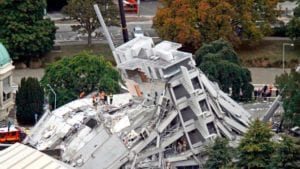Buildings that rock during an earthquake and return to plumb would withstand seismic shaking better than structural designs commonly used in vulnerable zones, a Case Western Reserve University researcher has found.
Those buildings would also be more easily and cheaply repaired and put back into use more quickly, said Michael Pollino, an assistant civil engineering professor at Case School of Engineering, in Cleveland Ohio. Although Pollino didn’t invent the technology, he developed a computer model that compares what are called “rocking steel-braced frames” to current earthquake standards used in low- to mid-rise buildings. His findings are featured in the journal Engineering Structures. “Currently, engineers are designing low-rise structures for an earthquake that has a 10 percent chance of occurring in a 50-year-lifetime,” he said. “We accept there will be damage, but no collapse or loss of life. “But what about an event that has a 50 percent chance of occurring?” he continued. “You may still have to tear the building down afterward… I think this design should do more to make the building usable and repairable afterward.” Pollino is among a growing number of researchers who are finding advantages to the design, which has not yet made it into practice. There are still details to investigate. He and colleagues are discussing forming a technical committee of civil engineers that would advance the technology into practice.








